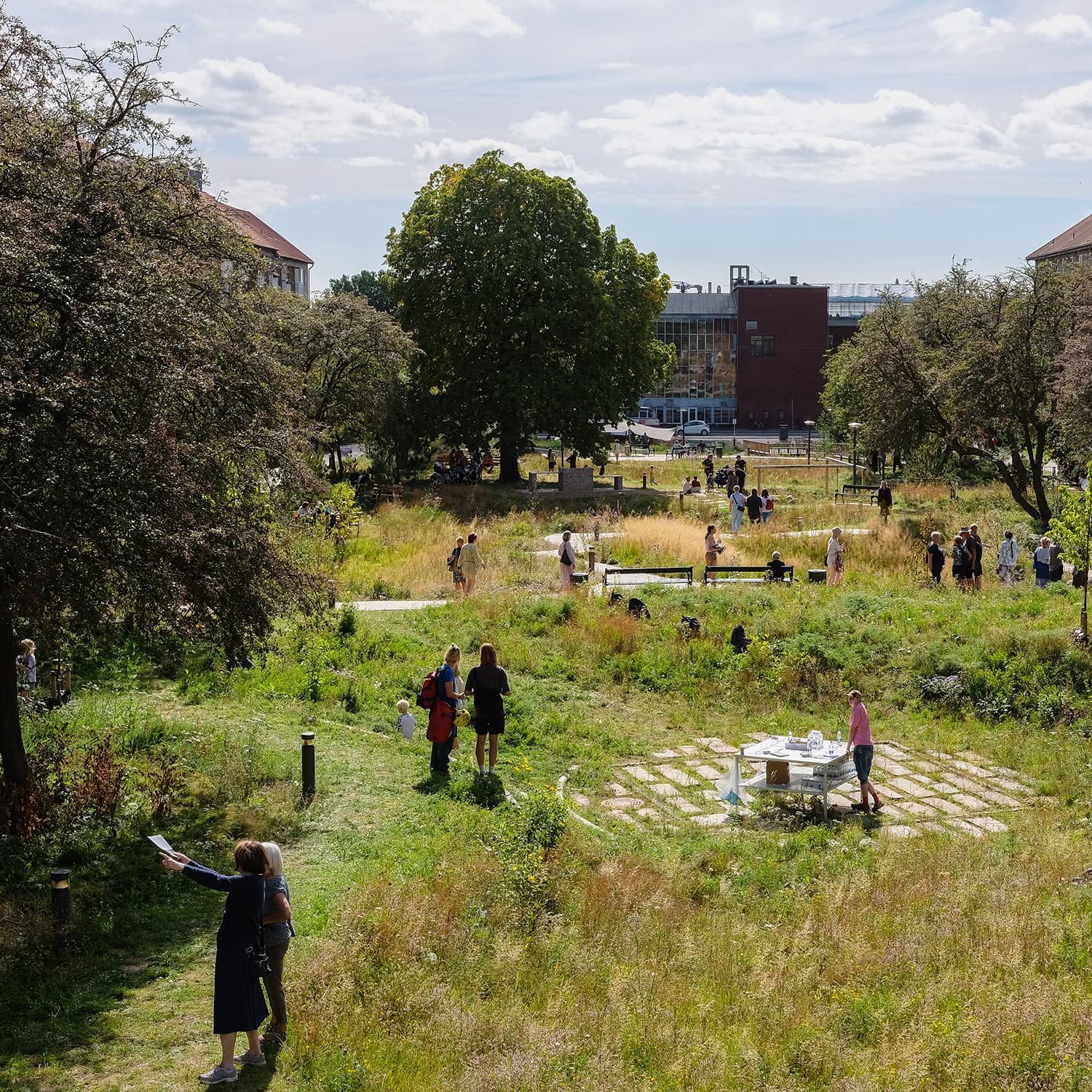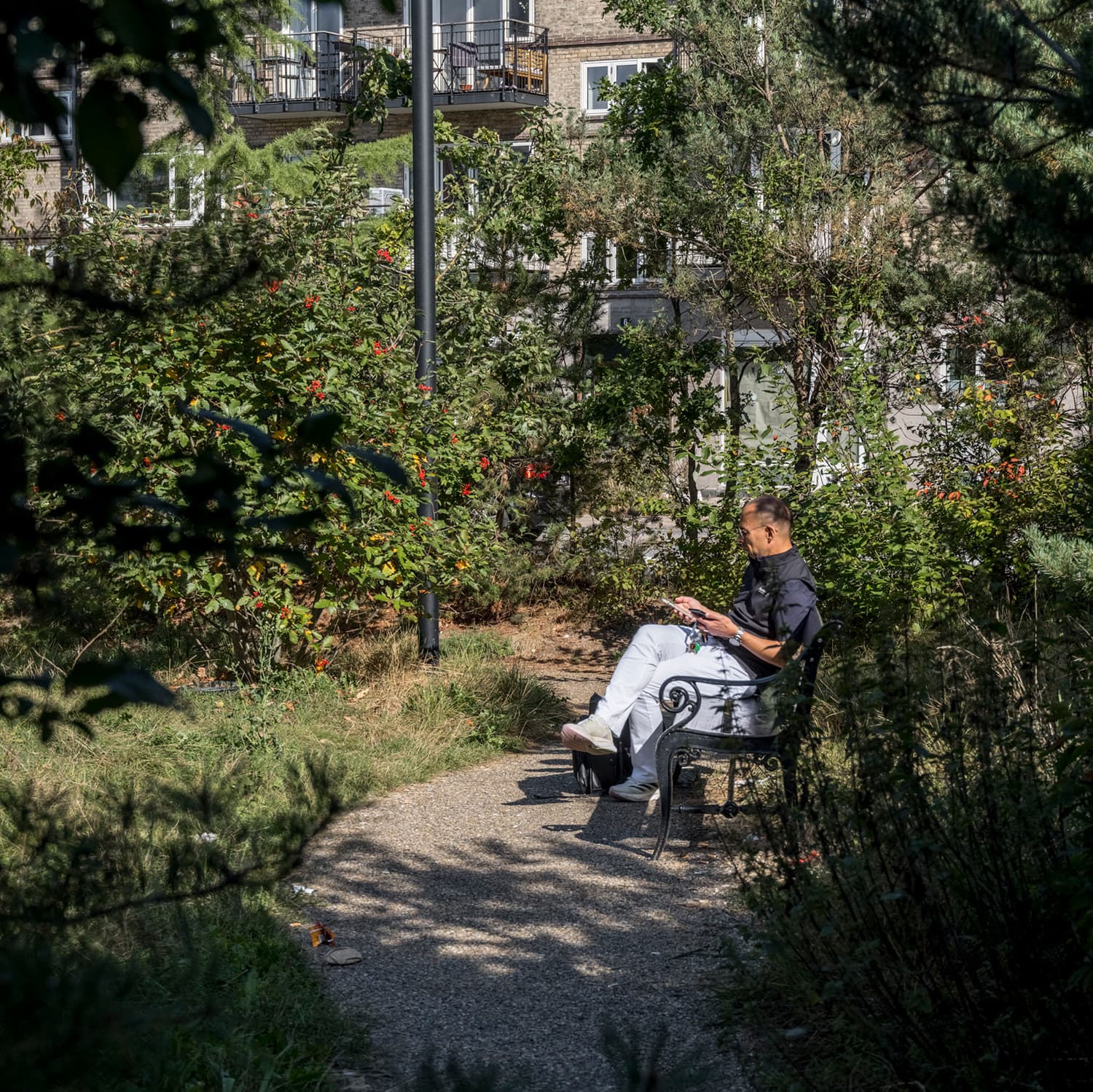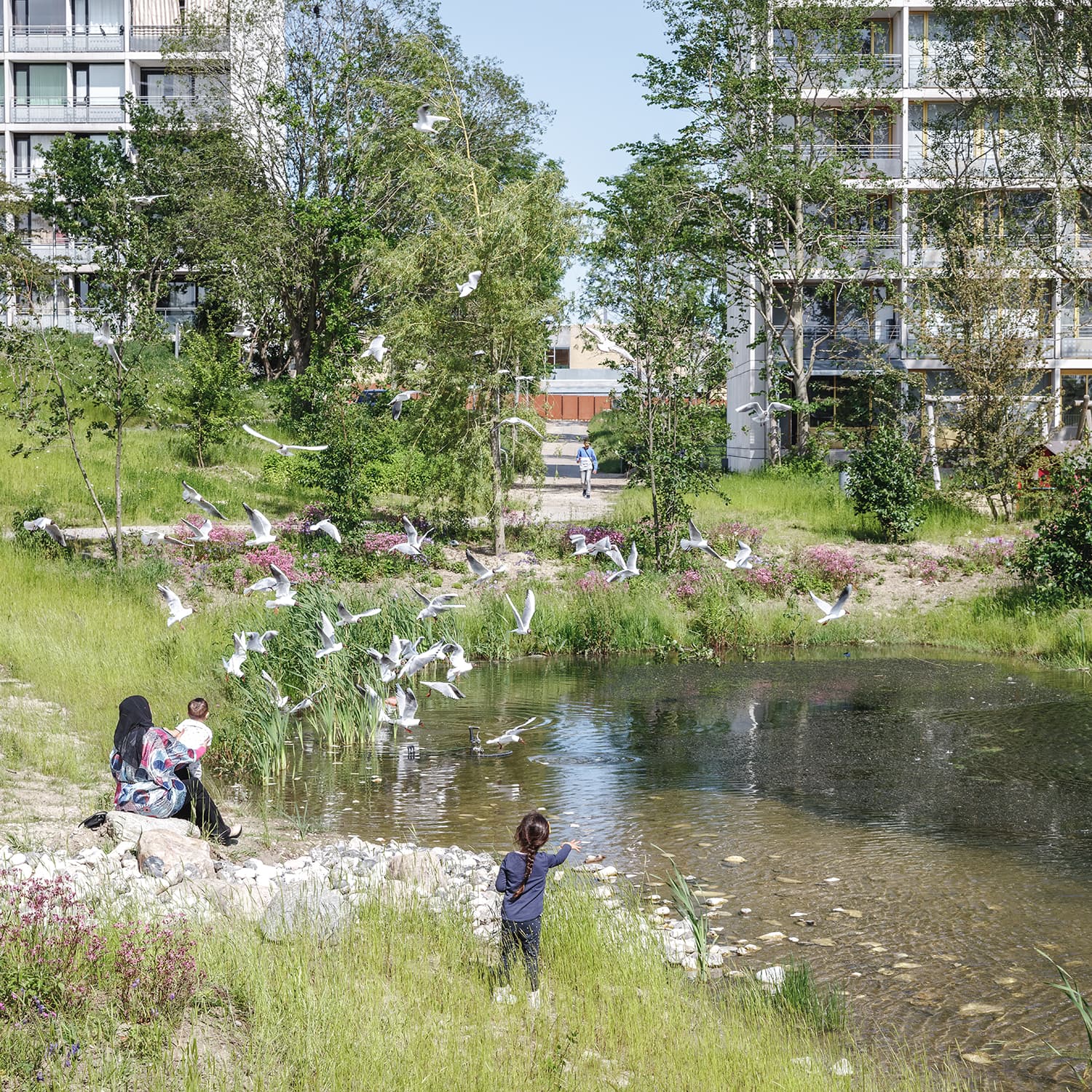Out of the Shadows: The City’s Green Spaces Have Become as Important as Its Buildings
The climate and biodiversity crises have radically changed our view of nature, and the balance of power between architects and landscape architects has become far more equal. Meet two landscape architects who have practiced their craft for three decades. They describe the paradigm shift that may be transforming our cities for good.
By Kasper Foged
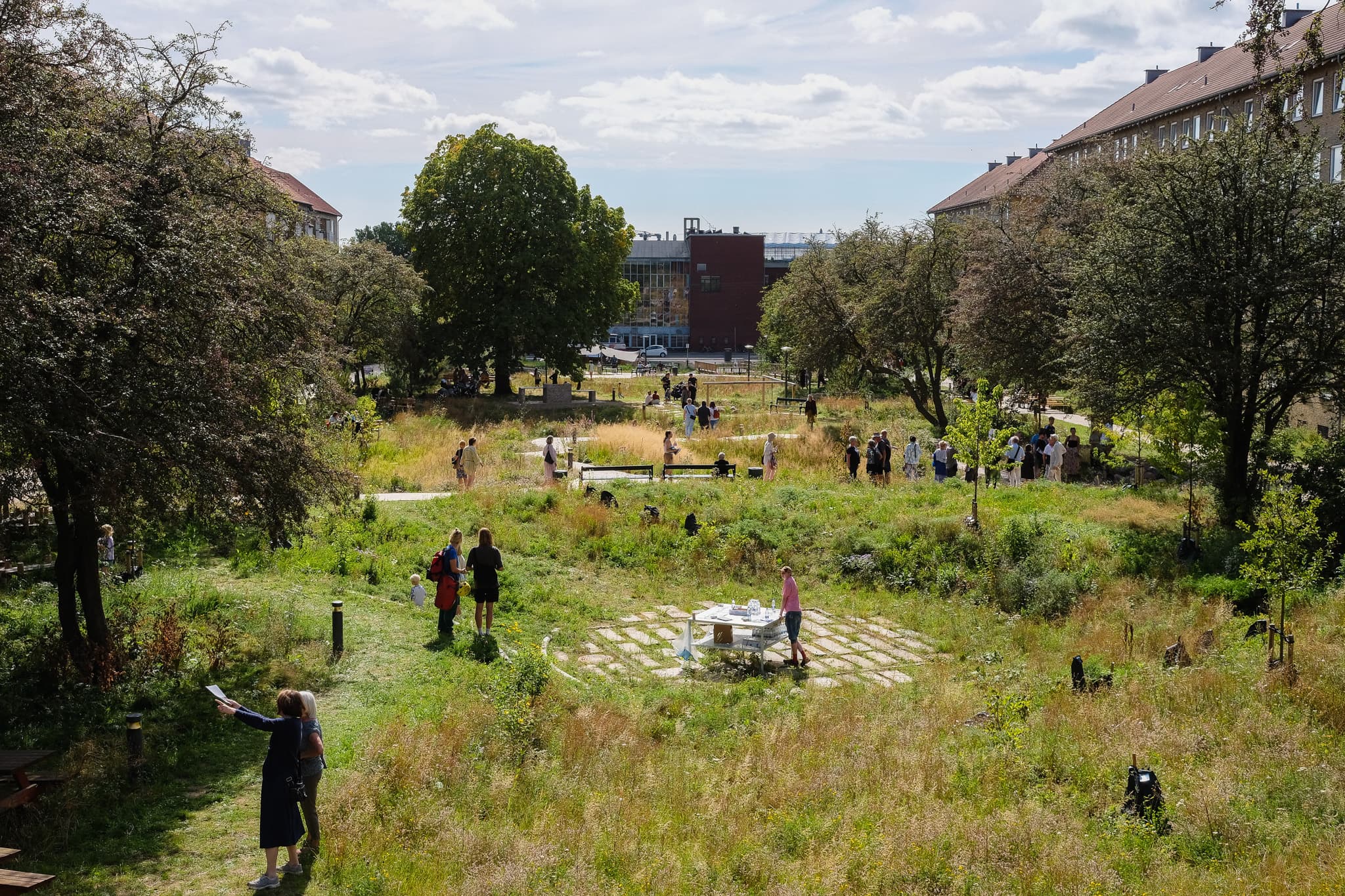
It was not many years ago that landscape architecture was considered the icing on the cake. The green areas around buildings in the city were, by many, seen as an appendix to architecture. Architects were the ones who primarily had access to a given construction budget, while landscape architects had to settle for whatever money was left once the architect had completed their work. With the climate and biodiversity crises, our perception of nature has changed radically, and today landscape architects have not only gained a completely different status – the green spaces in our cities are now prioritized just as highly as the buildings themselves.
Humans have cultivated nature for thousands of years – from ancient burial and Viking sites to Roman gardens. But although one could argue that landscape architecture has roots reaching back to antiquity, it was not until the 20th century that it truly developed as a profession. It is only 75 years since the first landscape architecture program opened to students in Denmark. During the 1960s and 1970s, when large residential developments began to spring up on the outskirts of major cities, the need to plan and design urban spaces, parks, and green areas became clear. But our preferences for what makes a good outdoor space, a park, or a green urban area have changed dramatically over the years.
Squared, Practical, Good
Peter Juhl is the director and founder of Opland Landscape Architects, which was established in 1997. When he started out as a young landscape architect, things looked very different. Everyday life was characterized by clients who wanted something monocultural, form-aesthetic, clean, and simple.
»It was about a few strong design elements, such as trimmed hedges, shaped shrubs, rows of trees, and beds of roses and perennials, which dominated the picture back then. Everything was very shaped, arranged, and architectural. It required a lot of maintenance to stay sharp, but it was also easy to read and easy to understand. But it was also a bit boring, and everything looked like something you could also see at the neighbor’s,« he recalls.
That story resonates with Alexandra Vindfeld Hansen, landscape architect and partner at SLA. She also acknowledges that the profession has moved forward significantly over the three decades the firm has existed – but also that many more layers have been added to the discipline of landscape architecture.
»Since the 1990s, our knowledge has grown significantly – and it continues to develop. In the history of garden design, people viewed nature through the lens of architecture, as a building material rather than as a life-giving ecosystem,« she explains.
In more recent times, investments in landscapes were often the first to be sacrificed when building budgets were exceeded. Today, however, landscapes are seen as a central resource and a value-creating investment – investments that support biodiversity, well-being, and communities. According to Alexandra Vindfeld Hansen, this change marks one of the major shifts in the role of landscape architecture in urban development.
»Today, the city’s spaces are assigned the same value and priority as the built environment. Where we used to work as sub-consultants, there is now many projects where we act as lead consultants, facilitating and designing development processes for cities, organizations, places, people, and nature. The old hierarchy has dissolved – the landscape, which used to end up at the bottom, also economically, is now a central and equal part of projects and urban development,« she explains.
New Shoots Breaking Through
It has long become clear to us that many of the species that were common 30 years ago may no longer exist, and this is something that naturally also affects Peter Juhl of Opland Landscape Architects.
»My father collected butterflies. I remember it clearly from when I was a child, and when I later took up the same interest as an adult, I realized that maybe 20 of the species in his collection are ones I will never see in Denmark again. Those species aren’t essential for pollination, but they’re a pretty good indicator of nature’s health because they depend on very specific conditions that no longer exist. That’s why it’s encouraging that we’re finally starting to focus more on changing our perception of nature – and that it’s happening, fortunately,« he says.
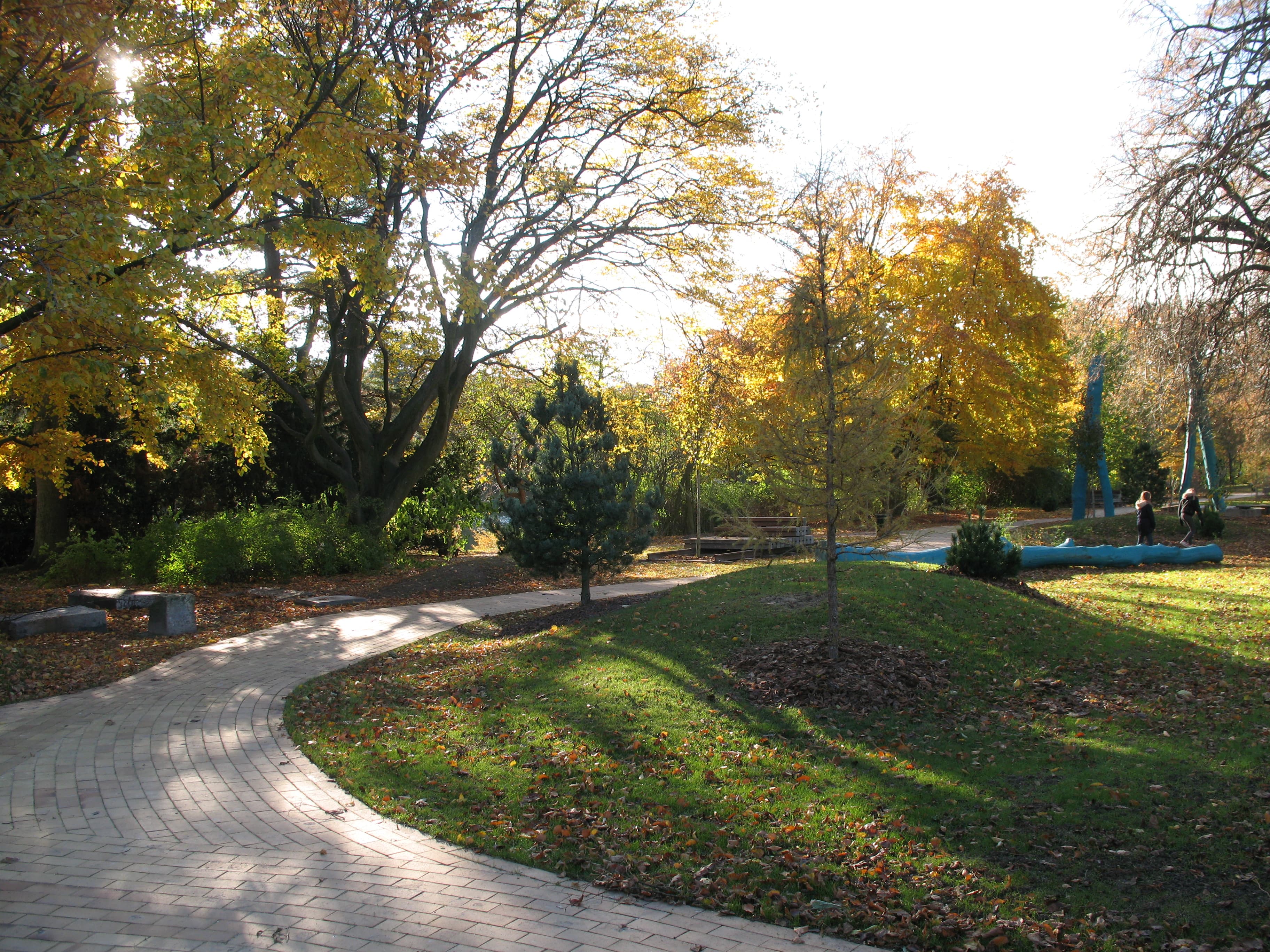
It’s now about 10 years since the concept Vild Med Vilje (“Wild by Choice”) began to sprout and take root. The first time Peter Juhl and Opland truly worked with the idea was in Kildevæld Park in Østerbro, where the assignment from the City of Copenhagen was to create a green belt that would feel like a hidden piece of nature in the middle of the city. It became a small oasis with insect hotels, 37 new trees, rainwater beds in grass-covered depressions, play huts made of living willow, fruit trees, and blueberry bushes.
»Of course, it gives a different expression, and I actually agree with the skeptics that it can look incredibly messy if we as landscape architects don’t frame it properly and make it long-lasting. Many people – especially politicians – think that the ‘Wild by Choice’ concept is about planting and sowing some seeds and then just letting things be. It’s not just a convenient cost-saving exercise. That’s a big misunderstanding. Many think that if we just let things grow, we can mow the grass twice a year instead of 20 times, but even the wild needs maintenance if it isn’t to be overtaken by invasive species. So, you just need different machines and a different kind of expertise – but it costs the same,« he points out.
Quality of Life and Nature
People with access to nature at work experience greater job satisfaction and are less affected by stress, according to a study from the University of Copenhagen and the Swedish University of Agricultural Sciences.
A study from Aarhus University shows that access to green surroundings in childhood is linked to a lower risk of developing mental disorders later in life – up to 55 percent lower, according to the researchers.
Many More Layers
At SLA, the firm has expanded in recent years – not only in the number of employees but also in the mix of professions. A development that is necessary because the discipline has become much more complex.
»In the past ten years, we have become increasingly aware that the challenges of cities can only be met if we expand our professional approach and understanding. We must bring more knowledge and disciplines into nature-based design – understand ecosystems, understand people’s real needs – and develop ways to translate interdisciplinary knowledge into our design practice, with the goal of creating better conditions for life in the broadest sense. It’s one thing to talk about it; it’s quite another to work with nature as a genuine partner,« explains Alexandra Vindfeld Hansen.
Therefore, it’s not only landscape architects and architects who sit at the desks at SLA, but also anthropologists, lighting designers, philosophers, geographers, and biologists – all working to gain a greater understanding of how SLA’s projects can support communities, biodiversity, and a more sustainable societal development. In addition, since 2016 SLA has had its own dedicated research and development unit, where the firm – either independently or in collaboration with external partners – works to build a more evidence- and data-based foundation for landscape architecture.
»Nature recognizes no city limits. Historically, we’ve seen nature as something outside ourselves, outside our cities, but with nature-based design it can solve many of the cities’ biggest challenges in interaction with the life-giving ecosystem services such as air and water purification, biodiversity, climate regulation, reduction of heat effects, and social well-being,« says Alexandra Vindfeld Hansen.
Peter Juhl from Opland occasionally experiences that the concept of nature can vary greatly between city and countryside. And in his view, it is in rural and large natural areas that the greatest effects can be achieved in terms of improving biodiversity. But that doesn’t mean it’s pointless to make a major effort in cities. Alexandra Vindfeld Hansen agrees.
»It’s very easy to end up in a discussion about where we best support biodiversity, and it quickly becomes an either-or debate. Yes, it’s out in the open countryside where we can make the large and decisive difference – and we must. But we also believe that people being connected to nature in their everyday lives has a huge impact on our health, our behavior, our empathy, and the way we live together, which is equally important,« she says.
It increases collective awareness of how we must organize ourselves in balance with the Earth’s resources and systems. It’s in the open countryside that the big difference can be made. But if we don’t change our behavior, our consumption culture, our understanding of waste, and the cycles connected to nature that cities depend on, then the transition we need will be very difficult to achieve.
Green Urban Spaces
Grønningen-Bispeparken
Climate adaptation and urban space project in Copenhagen. A formerly monotonous grass area has been transformed into a vibrant landscape with rainwater basins, biodiversity, and new meeting places.
Sankt Kjelds Plads
Climate adaptation in Østerbro, Copenhagen. Here, asphalt has been replaced by green areas, rain gardens, and hundreds of trees, turning the area into a green meeting place where urban life and nature merge.
Gellerup New Naturepark
Urban space and transformation project in Gellerupparken, Aarhus. The park aims to create a more vibrant and sustainable neighborhood through “social nature” – nature that fosters social interaction and biodiversity.
Nature as a Source of Well-Being
Several studies show that contact with nature has a major influence on human health and well-being – and they clearly demonstrate that we must work with nature-based solutions in our cities.
»There is a growing recognition that we must not lose our connection to nature. Restoring that connection is essential – not only to mitigate the climate crisis and strengthen biodiversity in cities, but also because the presence of nature has a direct and invaluable impact on our quality of life. Right now, there is momentum where urban nature is moving from being a ‘nice to have’ to a ‘need to have’ – and, in the next step, an actual ‘right to have,’« explains Alexandra Vindfeld Hansen.
Peter Juhl agrees and notes that his profession is never static but constantly evolving – and that landscape architecture, by definition, is never natural nature.
»Everything we do is a curation of the landscape. We create interesting contrasts between structured and organic, between the cultivated and the uncultivated, between light and shadow, the deciduous and the evergreen. All of it to imitate what we recognize in nature – what we love so much. But it’s important, because in the end it can create the change that helps push us toward a direction that is better for us humans in a mental sense and in a more sustainable direction. Because perhaps we can only survive as humans if we return to nature,« he concludes.
